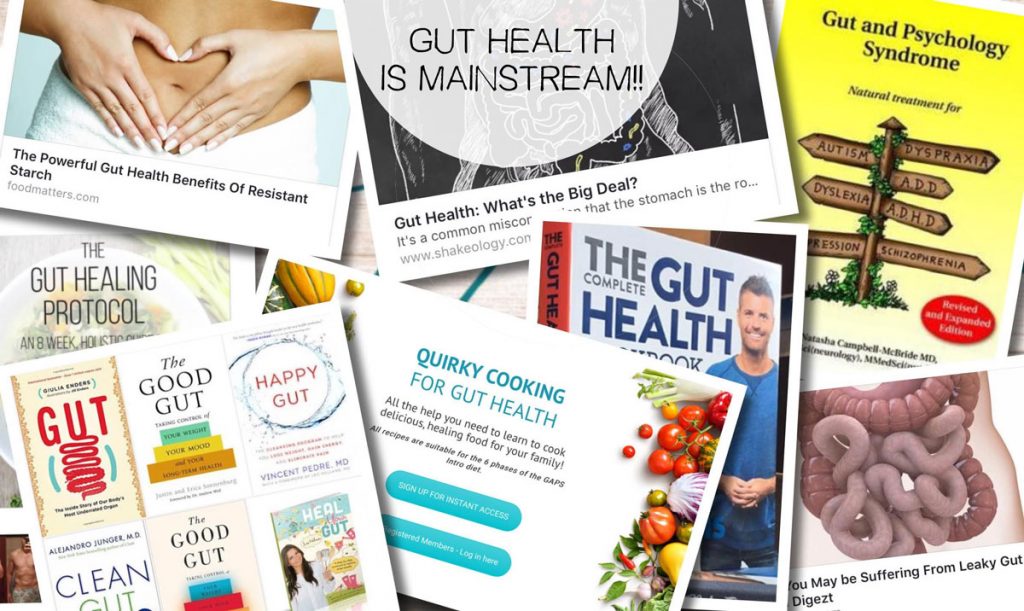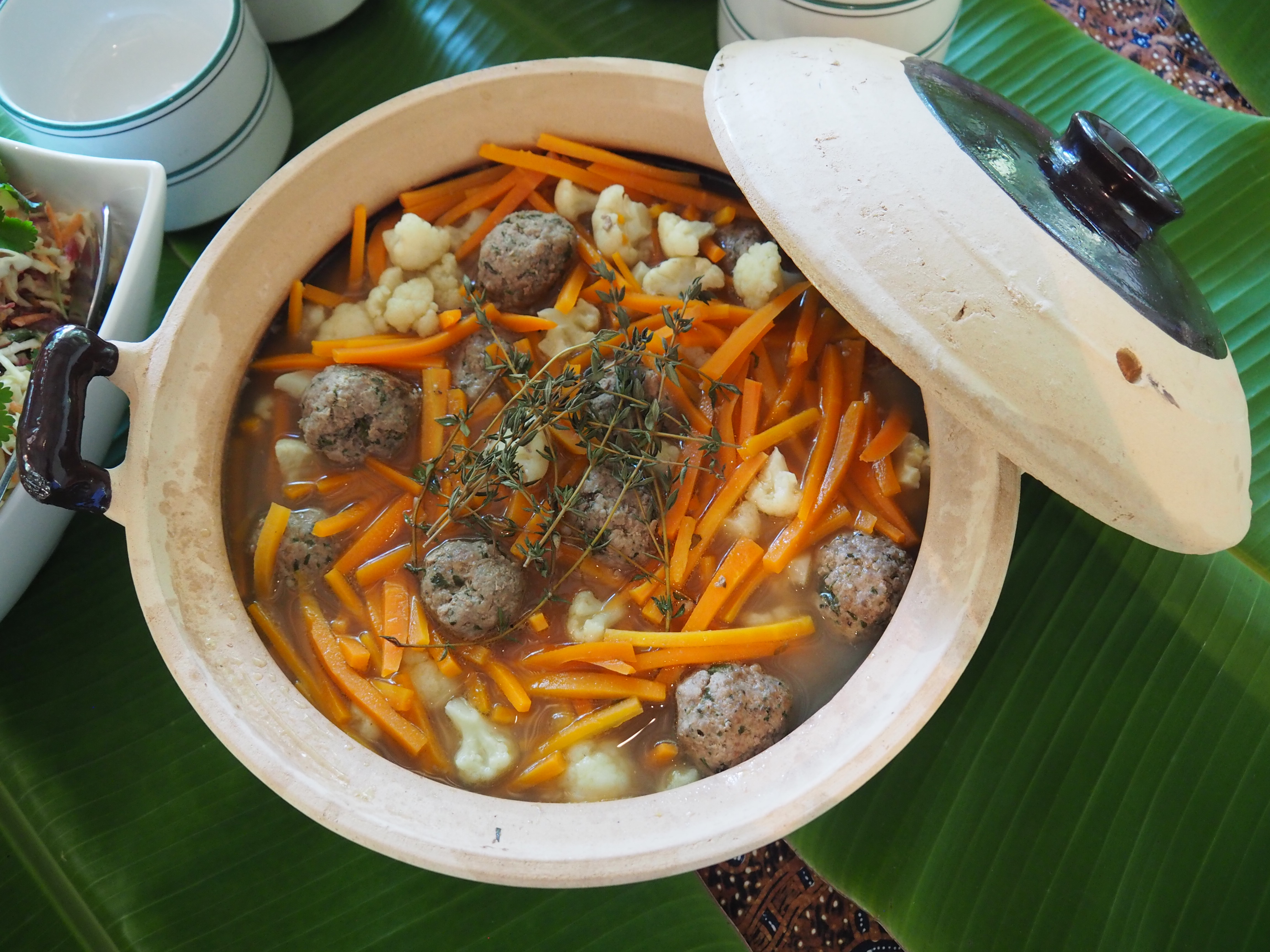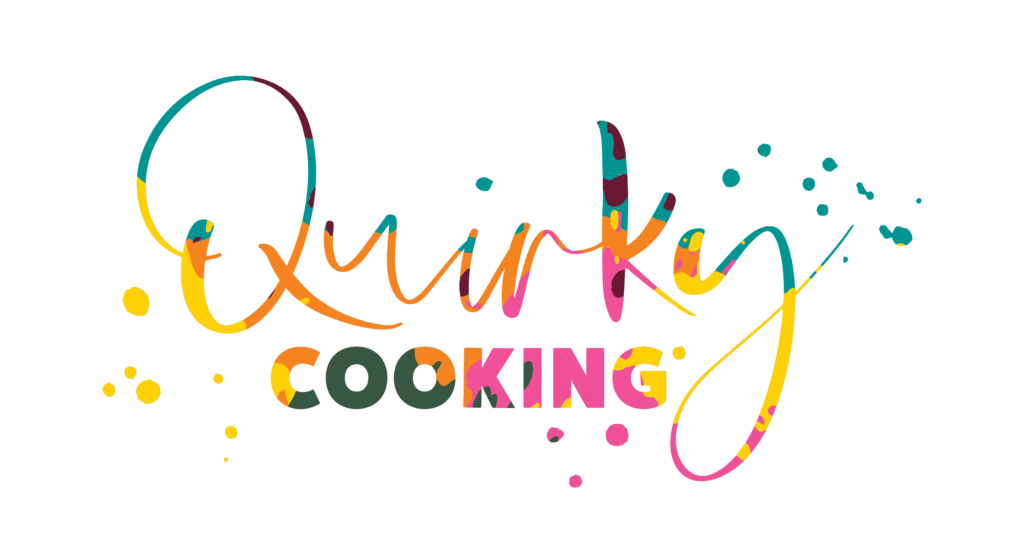No products in the cart.

What is GAPS?
The term GAPS is an acronym for Gut and Psychology Syndrome; a condition recognised through years of clinical experience and observation by Neurologist, Dr Natasha Campbell-McBride, who identified a link between an individual’s state of gut health and neurological or psychological health conditions such as obsessive compulsive disorder (OCD), attention deficit hyperactivity disorder (ADHD and ADD), autism, depression, anxiety and much more.
We now know that many common health conditions can be attributed to what is happening in the gut. This includes food intolerances, allergies, autoimmune diseases, weight issues (over and underweight), asthma, skin conditions such as eczema, acne, psoriasis, digestive disorders such as Crohn’s, IBS, ulcerative colitis, and even heart conditions.
When you start looking into GAPS or gut health, you will come across the term microbiome, which is used to describe the microbes (bacteria, fungi, viruses) that live in and on our body. The chronic health conditions we mentioned earlier are largely caused by a lack of integrity of the gut lining and the poor health and imbalance of the gut bacteria that form our microbiome. Our gut lining and the microbiome play a primary role in regulating our immune system (predominantly located within our gut) against chronic inflammation. A “leaky gut” (another term you should get to know) can manifest into any of the conditions mentioned above and may occur for a variety of reasons such as regularly consuming processed foods, chronic stress, poor sleep, antibiotics, drug-induced pregnancies and/or births, toxins, other chemicals and many other factors present in the modern lifestyle.
To properly address these conditions, it is extremely important to heal the lining of the gut and rebuild healthy gut bacteria. The food you eat plays a major part in healing the gut and this is where the GAPS diet comes in. GAPS excels at gut healing, giving the body a break from inflammatory foods, and providing it with mega doses of nourishing foods. Apart from food, there are also other important factors to work on, such as getting restful quality sleep, reducing environmental toxins, reducing stress, spending time outside in nature with fresh air and sunshine, natural detox methods, and more.
For more information on gut health, leaky gut and the Microbiome, check out our article Top 6 Foods for Gut Health.
Listen to a podcast with GAPS Practitioner and health scientist, Elyse Comerford, on the basics of GAPS:
A Quirky Journey Podcast: GAPS 101 with Elyse Comerford

What is the GAPS diet?
The GAPS diet is an intervention protocol that helps detoxify the body, especially the digestive system, to enable healing of the gut lining and re-populate gut bacteria, improving gut health and overall health and well-being. Many people that follow the GAPS diet find that they are able to clear up many of the health complaints listed above.
There are two parts to the GAPS diet. The Introduction diet has 6 stages and the Full GAPS diet. The protocol eliminates inflammatory and hard-to-digest foods while maintaining and re-introducing nourishing foods. This allows the gut to heal while still providing nourishment to the body.

How to approach GAPS
One of the most important things to remember is that GAPS is not a one-size-fits-all approach. Depending on your condition’s severity, it is necessary to tailor the diet to suit the individual. Some people can move through the first stage of the Introduction diet in a few days, perhaps spending more time in stage two. Others may need to stay on stage one for longer due to being unable to cope with many vegetables. Some can go through the 6 stages of the Introduction diet in three months, others may take a year or more.
For those with food intolerances and allergies, it is important to go through the Introduction phase very slowly and carefully, with the help of an experienced GAPS practitioner (who has personally been through GAPS, not just studied it). Food intolerances and allergies are a result of the gut lining being “leaky”, which does not allow food to be digested and absorbed properly and provokes an immune reaction against undigested food particles. Healing and sealing the gut should clear up most, if not all food allergies and sensitivities.
Listen to these podcasts with Mary Kelly of Good Mood Food to get an understanding of how the GAPS diet can heal allergies and food intolerances, as well as FPIES, salicylate intolerance, amine intolerance, sensory processing disorder, eosinophilic oesophagitis, candida, parasites, depression, autoimmune conditions, and much more!
A Quirky Journey Podcast: Healing with GAPS When You Can’t Tolerate Many Foods
If you do not have serious digestive issues, food allergies or intolerances, you may be able to go through the Introduction diet phases more quickly. You will learn to be very aware of how your body feels as you move through each stage, if you take it slowly, and will be able to tell if you experience any symptoms or discomfort when adding in foods so that you know to pull back when needed.
Once you have successfully added in the foods in the Introduction diet, you will move on to the Full GAPS diet. It is up to the individual how long they stay on Full GAPS, but care must be taken to introduce starches slowly, and transition back into a whole foods diet little by little.
Following are the lists of foods allowed on the GAPS diet – the 6 stages of the Introduction diet, and the Full GAPS diet – as well as a list of foods to avoid when healing the gut.
Join our online program to get some help with the first steps when beginning GAPS. Our program focuses on the GAPS Introduction diet and includes cooking videos, an e-book for each stage with menu plans and all the recipes you need, and an online support group where you have access to GAPS coaches and practitioners for help. Find out more here:
Quirky Cooking for Gut Health Online Program
Approved foods List
Foods Allowed on the GAPS Introduction Diet
Stage 1
Vegetables (simmered in meat stock or water, no raw veggies)
- Artichokes
- Asparagus (soft parts only)
- Beetroot
- Bok choy
- Broccoli (no stalks – if causes stomach irritation, delay introducing until Stage 3)
- Brussels sprouts (if causes stomach irritation, delay introducing until Stage 3)
- Carrots
- Capsicum/bell peppers (if ok with nightshades, peeled until Stage 3)
- Cauliflower (no stalks – if it causes stomach irritation, delay introducing until Stage 3)
- Eggplant/aubergine (peeled and deseeded until Stage 3)
- Garlic (cooked or minced finely and added to hot food at the end of cooking)
- Ginger root
- Green beans (not string beans)
- Greens, leafy (if causes stomach irritation, delay introducing until Stage 3)
- Kale
- Leek (white part only, add softer green parts to a broth and strain out after cooking)
- Onions
- Peas (shelled)
- Pumpkin (peeled and deseeded)
- Spinach
- Squash, all kinds (peeled and deseeded on stages 1-3)
- Tomatoes (if nightshades are tolerated, otherwise leave until later stages)
- Turnips
- Watercress
- Zucchini/courgette (peeled and deseeded on stages 1-3)
Meat (from fresh or frozen, simmered in water; no grilled or roasted meats, minimal muscle meats)
- Beef
- Chicken
- Duck
- Fish
- Goose
- Lamb
- Pheasant
- Pigeon
- Pork
- Quail
- Shellfish
- Turkey
Fats (homemade or organic, grass-fed animals, no additives)
- Beef tallow
- Chicken schmaltz
- Coconut oil, cold-pressed (introduce gradually, can cause more die-off symptoms,)
- Duck fat
- Ghee (use the GAPS Dairy Introduction protocol to introduce slowly if you are healing a dairy intolerance – May need to delay until a later stage if highly sensitive)
- Lard
Condiments
- Sea salt or Himalayan salt
- Pepper, white (ground) or peppercorns (remove after cooking)
- Apple cider vinegar (organic, raw)
Beverages
- Fresh lemon juice in warm water
- Chamomile tea (no additives)
- Mint tea (made with freshly chopped mint)
- Ginger tea (made with finely sliced or grated ginger)
Sweeteners
- Honey (raw, local honey, best kept to a minimum)
Other
- Meat stocks, made from meat on the bone, short cooked (no bone broths until full GAPS)
- Sauerkraut juice (homemade is best, or buy lacto-fermented – introduce gradually 1 drop on each meal, avoid eating fermented vegetables until stage 3)
- Fermented dairy, begin with whey (use the GAPS Dairy Introduction protocol to introduce slowly if you are healing a dairy intolerance – May need to delay until a later stage if highly sensitive)
- Fat bombs if needed for low blood sugar levels (honey mixed with butter/ghee/coconut oil, taken by teaspoon as needed)
Stage 2
All the foods from stage 1, plus:
Eggs
- Raw egg yolks (organic/pastured/free range)
- When raw egg yolk is tolerated, introduce soft cooked egg yolk (simmer in stock, add to soup)
Herbs
- Fresh herbs, no dried
Vegetables
- Fennel
Other:
- Stews and casseroles based on meat stock, fat, salt and fresh herbs
- Ghee (can usually be tolerated even when another dairy is not yet tolerated/ introduced)
- Pate (made from organic livers and allowed ingredients – serve as a condiment with food, or by spoonful)
Stage 3
All the foods from stages 1 and 2, plus:
Eggs:
- Whole eggs (scrambled in lots of fat)
- Whole eggs (poached in stock or water)
- No raw white, only cooked
Nuts:
- Almond butter (made from activated nuts, and cooked in nut butter pancakes with plenty of fat)
Cooked vegetables:
- Asparagus
- Cabbage
- Celery
- Celeriac
- Cauliflower and Broccoli florets (if not tolerated in stage 1)
- Mushrooms (if tolerated)
Raw vegetables:
- Avocado (ripe, mashed and added to soup)
Other
- Sauerkraut and fermented vegetables (homemade is best, or buy lacto-fermented – start slowly with just a few shreds of kraut/fermented veg)
- Turmeric (cooked)
Stage 4
All the foods from stages 1-3, plus:
Meats (to be introduced slowly) – no burnt or smoked meat
- Roasted meat (beef, chicken, fish, duck, goose, pheasant, pigeon, pork, turkey)
- Grilled meats (beef, chicken, fish, duck, goose, pheasant, pigeon, pork, turkey)
- Shellfish, cooked (crabs, lobster, crayfish, shrimp and prawns (shrimp), squid, octopus, clams, oysters and scallops)
Homemade fresh juices
- Cold-pressed (consume within 25 minutes of pressing)
- If using a blender/Thermomix, make sure you strain well to remove the fibre
- Carrot juice (begin by adding a few spoonfuls to dilute with warm water, or mixed with whey or yoghurt; gradually to one cup per day; once tolerated, add cabbage, celery, mint leaves, lettuce)
- GAPS ‘milkshake’ (made with carrot juice, egg yolks and 24 hr yoghurt/sour cream/coconut oil/ghee/butter)
Other
- All nut and seed flours/meals, activated then ground and baked into bread
- Extra virgin olive oil (cold pressed)
- Herbs (dried)
- Turmeric (dried)
Stage 5
All the foods from stages 1-4, plus:
Raw vegetables:
- Carrot
- Cucumber, peeled
- Lettuce
- Onions
- Tomatoes (if you do not have any reaction to nightshades)
Cooked vegetables:
- String beans
Fruit:
- Apples/applesauce (cooked, pieces or puree, have with fat)
- Homemade fresh juices (cold-pressed, drink within 25 minutes of pressing, if using a blender strain well to remove fibre)
- Apple juice
- Mango juice
- Papaya juice
- Pineapple juice
Kinds of milk – homemade
- Almond milk
Other:
- Spices (pure, organic, single-test one at a time)
- Turmeric (raw)
Stage 6
All the foods from stages 1-5, plus:
Vegetables (raw or cooked)
- Black radish
- Broccoli (with stalks)
- Cauliflower (with stalks)
- Lettuce
- Spinach
Fruit (raw or cooked)
- Apple
- Apricots
- Banana
- Berries
- Black Sapote
- Cherries
- Kiwi fruit
- Nectarines
- Papaya
- Peach
- Pear
- Pineapple
- Raspberries
- Satsumas
Juices
- Tomato juice
Dried Fruit (preservative-free, no added sugar, sulphur or vegetable oils)
- Dates
- Prunes
- Raisins
Kinds of milk (homemade)
- Coconut milk and cream
Herbs/Spices
- Cinnamon
- Coriander
- Dill
Other
- Capers
- Vinegar
- Honey (can increase amount)
Food Allowed on the Full GAPS Diet
All foods from stages 1-6, plus:
Vegetables
- Peas (raw)
Fruit
- Dried fruit (preservative-free, no added sugar, sulphur or vegetable oils)
- Grapes
- Grapefruit
- Kumquats
- Lemons
- Limes
- Melons
- Olives (preservative-free or homemade brine)
- Oranges
- Tangerines
- Freshly made juices (homemade)
Meats
- Fried meats, in approved fats/oils
- Barbequed meats (home barbecued – no burnt meat; smoked is fine if no preservatives/sugar)
Dairy
- Butter (regular or cultured, grass-fed, preferably organic)
- Cheeses (aged) Asiago, Blue, Brick, Brie, Camembert, Colby, Edam, Gorgonzola, Gouda, Havart, Limburger, Monterey Jack, Muenster, Parmesan, Romano, Roquefort, Stilton, Swiss, Cottage cheese
Nuts/seeds/meals/nut butters (preferably activated or roasted)
- Almonds
- Cashews
- Hazelnuts
- Peanut butter (preferably homemade, no sugar)
- Peanuts
- Pecans
- Pine nuts (if Chinese pine nuts, make sure you activate or roast them to prevent pine mouth)
- Walnuts
- Sprouted seeds
- Tahini
Herbs/Spices
- Mustard seeds
- Nutmeg
Legumes (homemade, soaked and cooked well)
- Lentils
- Lima beans
- Navy beans
Oils
- Almond oil
- Avocado oil
Beverages (alcohol in minimal amounts)
- Coffee (weak)
- Gin*
- Herbal teas
- Scotch*
- Tea (weak)
- Vodka*
- Wine (dry red/white)*
Other
- Bicarbonate soda (natural, no aluminium)
- Cellulose (in supplements only)
- Citric acid
* I don’t personally advocate alcohol, but these are allowed in minimal amounts if desired
Foods to Avoid on GAPS
- Processed food and canned food (these usually contain additives including preservatives, colours, flavourings, starch, yeast, lactose, wheat or sugar)
- Any kind of sugar and all foods that contain it (eg. chocolate, biscuits, cookies, fruit drinks, cakes, ice cream, pastries, cupcakes, muffins, etc)
- Any kind of syrup (eg. maple syrup, corn syrup, molasses)
- Aspartame and any artificial sweeteners (this is a brain toxin)
- Legumes (beans and pulses of any kind, until full GAPS when well-prepared lima beans, lentils and navy beans may be added)
- Soy and any kind of product made out of soy (including soy sauce/tamari/shoyu)
- Grains and pseudo-grains (wheat, oats, rye, rice, barley, semolina, spelt, couscous, quinoa, buckwheat, teff, millet)
- Any baked goods made of the above (e.g. bread, cakes, biscuits, muffins, pancakes, batters, breadcrumbs, pasta)
- Breakfast cereals
- Roots and starchy vegetables/legumes or anything made from them (potato, sweet potato, parsnips, tapioca, cassava, Jerusalem artichokes, yams, carob, mesquite)
- Milk – with the exception of fermented milk products such as raw hard cheese, butter, ghee, sour cream, creme fraiche, yoghurt, and kefir (no sugar or preservatives, organic)
- No pasteurised milk
- Note: Goat’s and sheep’s dairy is often better tolerated than cow’s dairy due to the protein and carbohydrate structures being easier to digest for many people.
- Fruit juices – except freshly pressed and strained
- Alcohol (no beer or spirits – small amounts of preservative-free alcohol allowed on full GAPS, see above)
- Coffee and strongly caffeinated tea (small amounts of weak, organic coffee and tea allowed on full GAPS)
- Soda/soft drinks (mineral water is allowed)
- Anything else with additives, preservatives, colours, flavourings, added sugar and other chemicals
